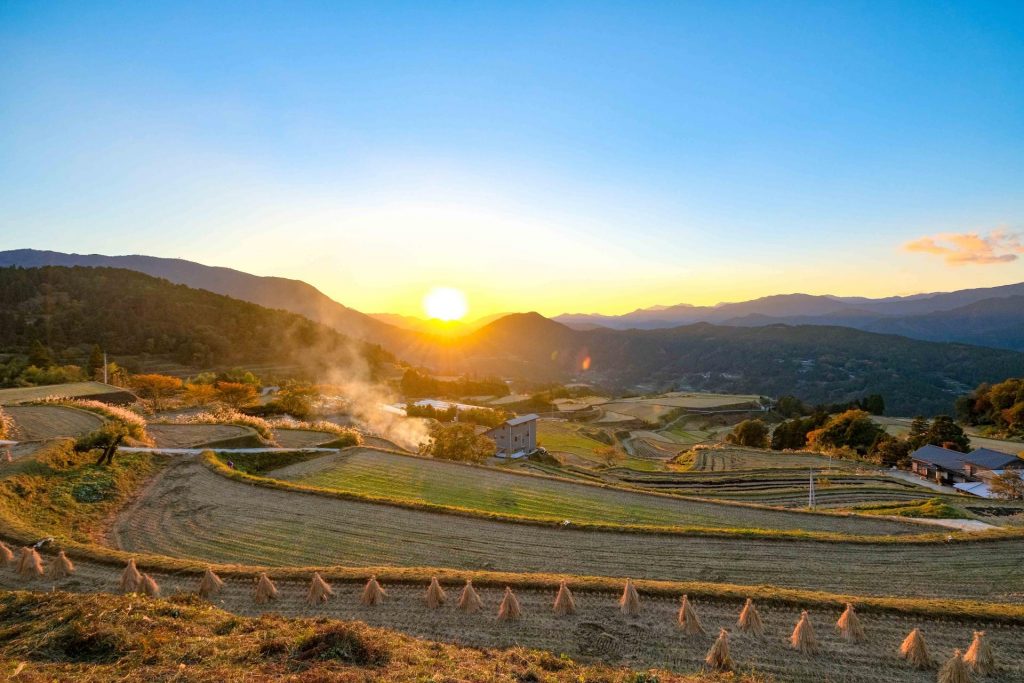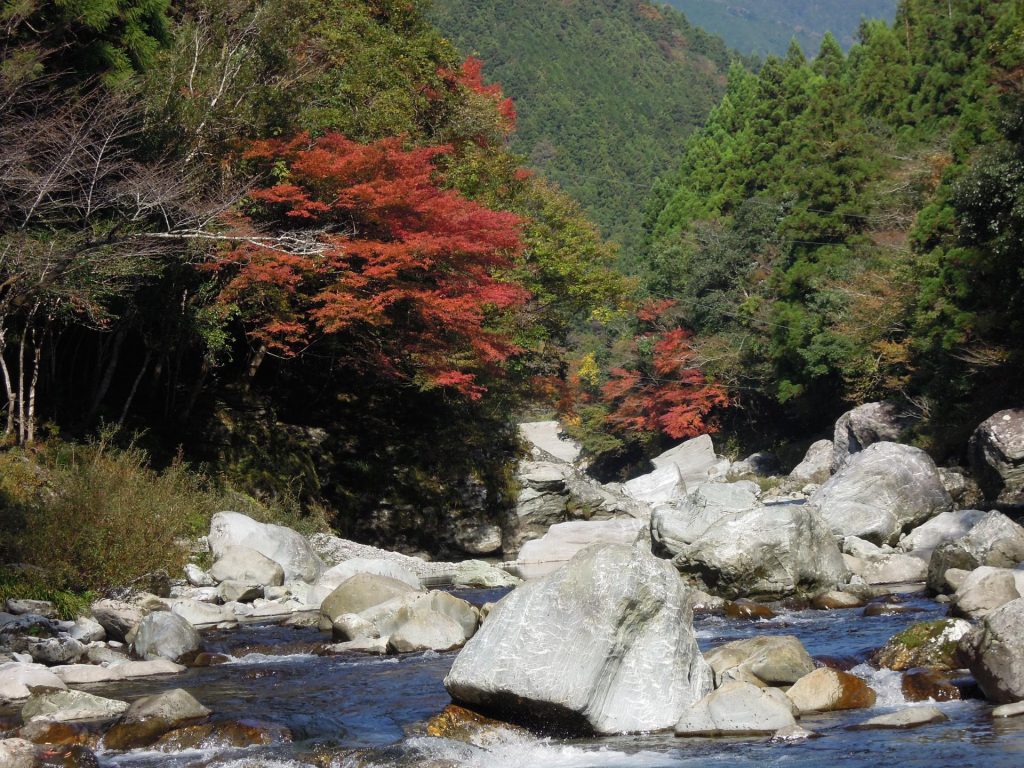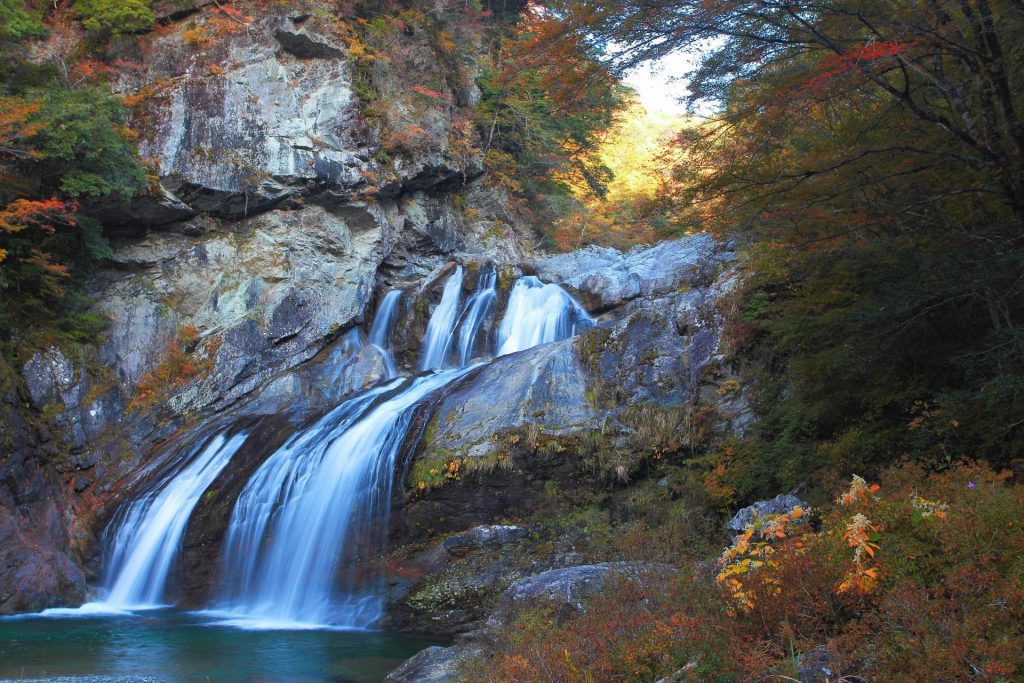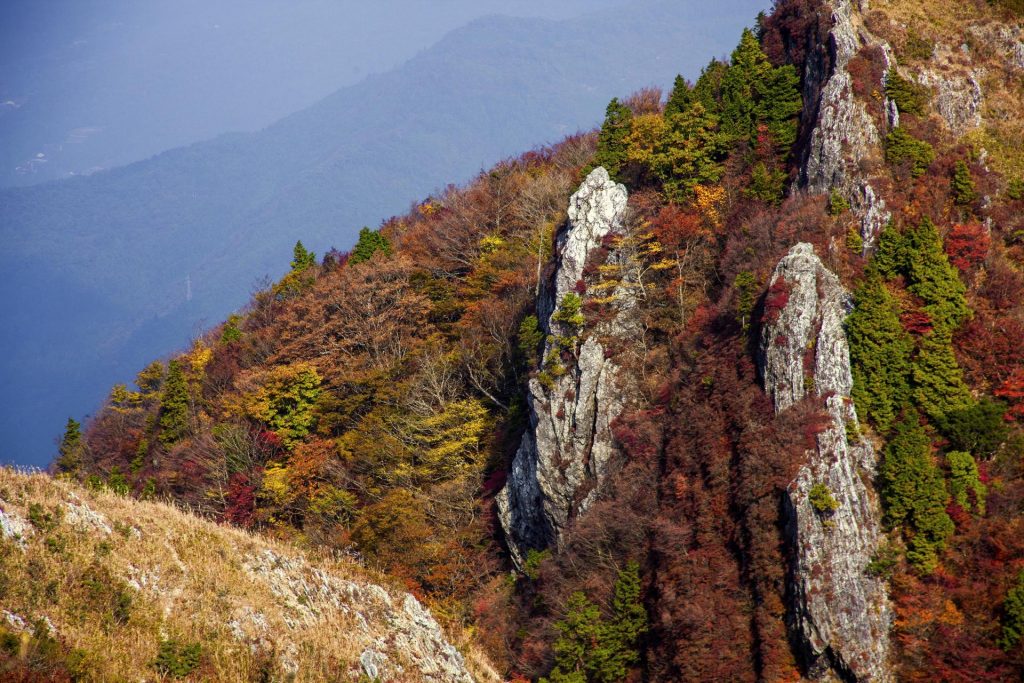Rice fields transform from green to gold in the Japanese countryside of the Tosa Reihoku area in Kochi Prefecture. Tosa Reihoku is located in the middle of Shikoku Island and is composed of four towns: Otoyo, Motoyama, Tosa and Okawa. The clear Yoshino River flows through the center surrounded by terraced rice fields on both banks. Up in the mountains, Mt. Shiraga and Mt. Kuishi are dressed in fiery seasonal colors and perfect for fall trekking. The varying terrain makes this region an ideal place for cyclists and hikers of all levels. Travelers can easily explore Tosa Reihoku’s Japan Eco Track routes.
The easiest way to get here is by flying into Kochi Ryoma Airport then driving to Otoyo I.C., a 20-minute drive from central Kochi. You can also take the bus from the airport to Kochi Station, then a 30-minute train ride to Osugi Station. Otoyo I.C. and Osugi Station are located close to each other and are starting points for the following routes.
Cycling Countryside River Route
This beginner-friendly cycling route starts at Montbell Outdoor Village Motoyama on the banks of the Yoshino River. This rental bike station also serves as a retail store, restaurant, souvenir shop and accommodation. The Reihoku-no-yu (hot spring) is on site.
Cycle along the river to Motoyama Sakura Market for fresh produce. A 15-minute ride away is Sameura Dam and the Yoshino Climbing Center, home to Shikoku’s major climbing competitions. Take a detour upstream along the emerald Asemi River before heading back down to the Yoshino River. You’ll see one of Yoshino River’s chinkabashi (submersible bridges designed to not get washed away in a flood). Continue down to Kashino River for a stunning view of terraced rice fields at Tenku-no-Tanada Observatory. Head back north to the Yoshino River for a quick recharge at Joki Coffee before making your way back to Montbell Outdoor Village Motoyama or Osugi Station. This 38.5-kilometer course takes around three hours with minimal elevation changes.
Cycling Sameura Dam and Sedogawa Valley Route
For cyclists wanting to go further, start this route at Tosa Cycle Station located just south of Sameura Dam. Follow the Yoshino River west towards the Seto River and into Sedogawa Valley, a popular place for fall foliage viewing. The majestic Amegaeri Falls is one of the biggest waterfalls on this route. Further along the road is the Burabura Suspension Bridge overlooking the valley. This 70.5-kilometer route takes five hours and is recommended for intermediate to advanced cyclists.
Mt. Kajigamori Hiking Route
For rewarding mountain views, climb the 1,399-meter Mt. Kajigamori in Kajigamori Prefectural Natural Park. You can start your trail at Ryuo-no-taki, said to be one of Japan’s top 100 waterfalls. At the peak, you’ll see the Ishizuchi Mountains to the west and Tsurugi Mountains to the east. Mt. Kajigamori Mountain Hut at the 8th station offers 360-degree views. There are also cultural treasures along the trail such as Sadafukuji Temple’s Oku-no-in and Mikagedo Temple. This 4.6-kilometer trail takes roughly three hours and is relatively easy.
Discover More Japan Eco Track Areas
Japan Eco Track: Cycling Noto Peninsula
Japan Eco Track: Cycling Mountains to Rivers in Shikoku
Japan Eco Track: Hiking and Cycling the Miyagi-Kennan Hamakaido
About Japan Eco Track
Montbell—Japan’s largest homegrown outdoor brand and retailer—started a series of events in 2009 called Sea to Summit. The goal was to invigorate local areas, holding events to experience nature through canoeing, cycling, trekking and other human-powered movement. While these events continue to be held in beautiful areas around Japan, the natural progression was to provide information and guides so travelers could experience these areas throughout the year at their own pace while learning the history and culture of the region and interacting with locals.
Japan Eco Track guides contain maps with designated routes of varying difficulty levels. Each guide includes information on local restaurants, guides, tour operations and other attractions. Along Japan Eco Track routes there are support stations located at affiliated stores and major transportation hubs such as train stations, airports and michi no eki (rest areas). Discounts and special offers are available at participating locations when travelers show the Japan Eco Track booklet. There are more than 15 guides, with new areas being developed and offered in English.









